Rattlesnake season has arrived, and we now watch for the lead subspecies of the Western Rattlesnake – aka, Northern Pacific Rattlesnake.
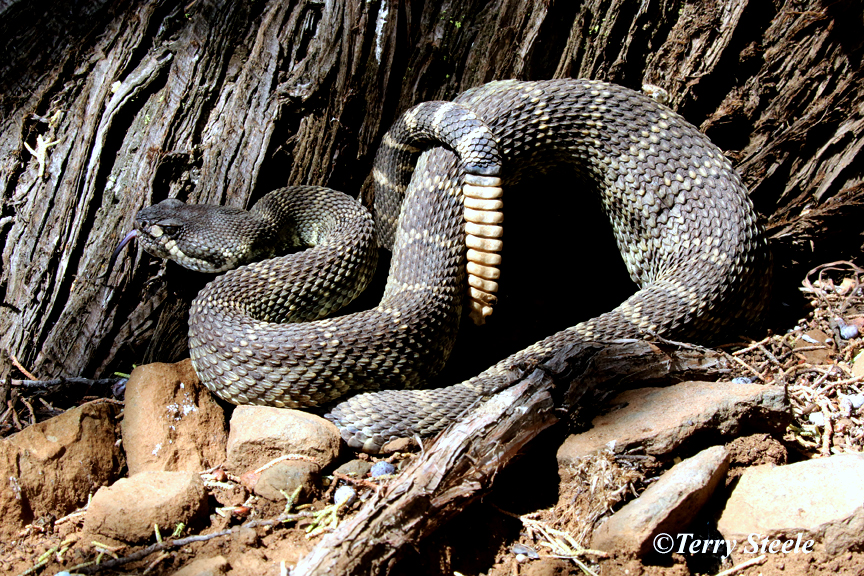
This subspecies, Crotalus oreganus oreganus, occurs in our canyon in northwest Grant County. Its range is very broad – from British Columbia to parts of Northern California, west of the Sierra Nevada divide. It is the only subspecies of the Western Rattlesnake in our area.
The other common Western Rattlesnake of Oregon is the Great Basin Rattlesnake.
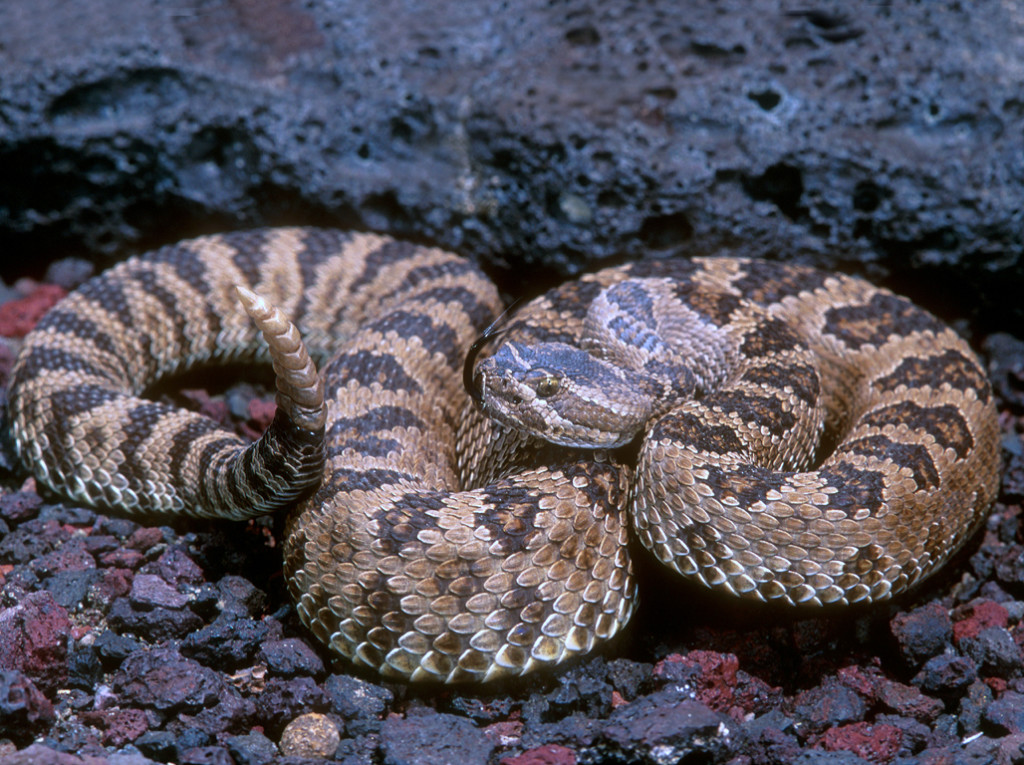
Although some internet sites fail to recognize its location throughout areas of southeast Oregon, Terry has extensive experience with this subspecies in Harney and Malheur Counties. Where it overlaps with the Northern Pacific Rattlesnake he has photographed intergraded snakes with very mixed patterns and colors.
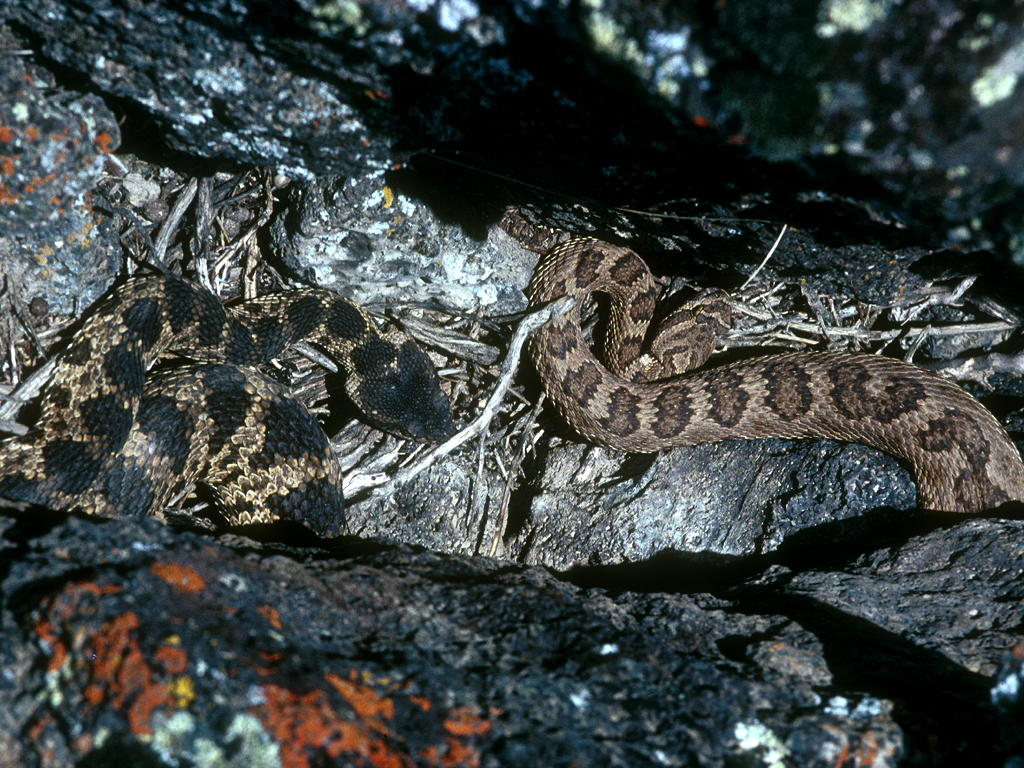
Unlike the Northern Pacific Rattlesnake, the Great Basin Rattlesnake does not have white rings at the base of its tail.
The days are warming, and more importantly, the nights are remaining above freezing. May brings the rattlesnakes and non-venomous species out of hibernation and they all become an active part of our diverse community of life. They hunt their prey throughout our garden, orchard and the spring fed riparian regions of our property.
The Northern Pacific rattlesnake is a venomous pit viper. Its appearance can vary widely in size and markings. We will show here two early arrivals on our property this May. The first is a juvenile, not much more than 15-18 inches in length.
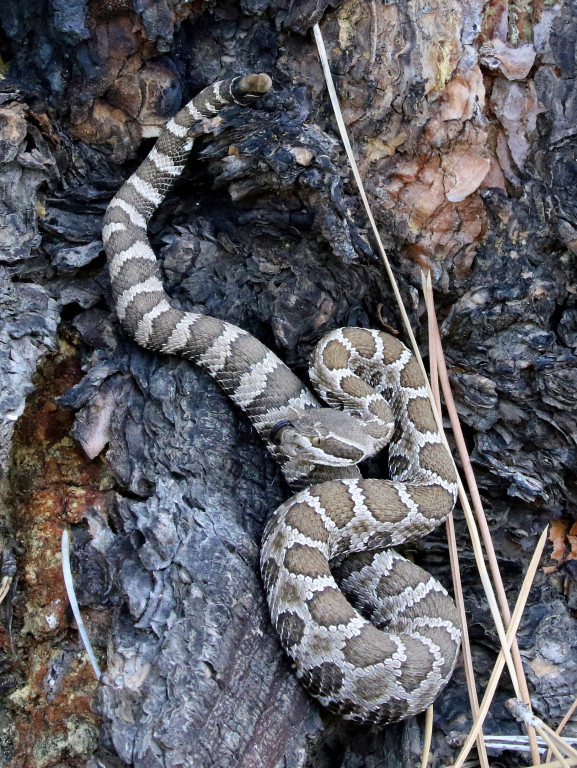
Note that it has only one complete yellowish segment on the rattle. The number of segments on a rattle are not a measure of age. A rattle is added each time the snake sheds its skin to accommodate its growth. That may happen every few weeks for a very young snake and several times a year for adult snakes. Sometimes rattles are broken off, too, so counting them is not a reliable way to determine the age of a snake.
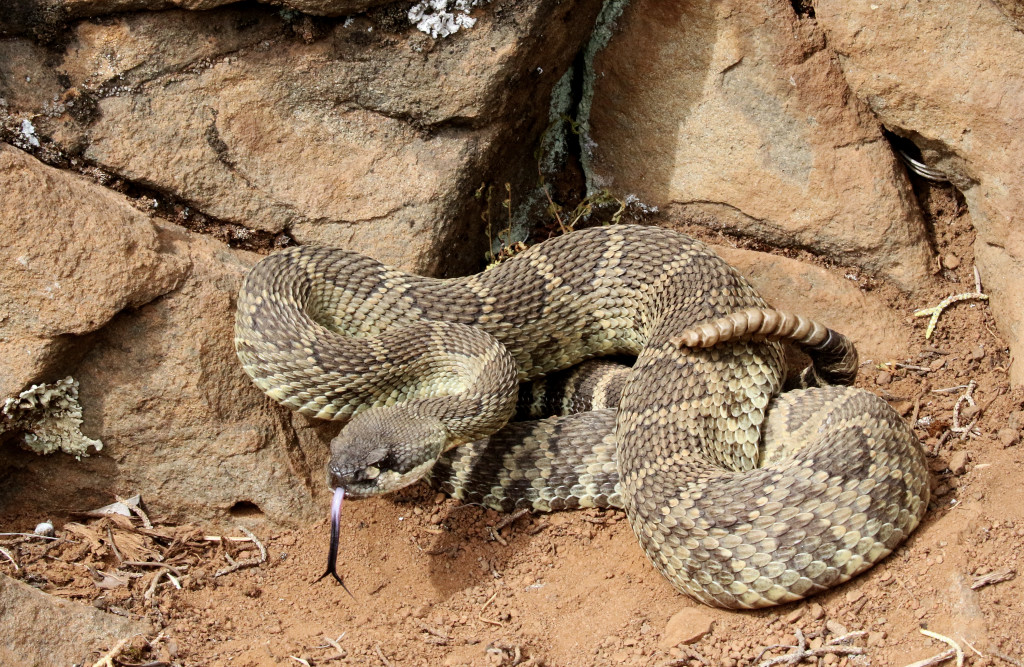
The juvenile was docile. The adult was on the fight and even striking at Terry’s snake hook. As always, snakes that are not safe to leave in our garden or near our home are safely released in unoccupied areas of our property.